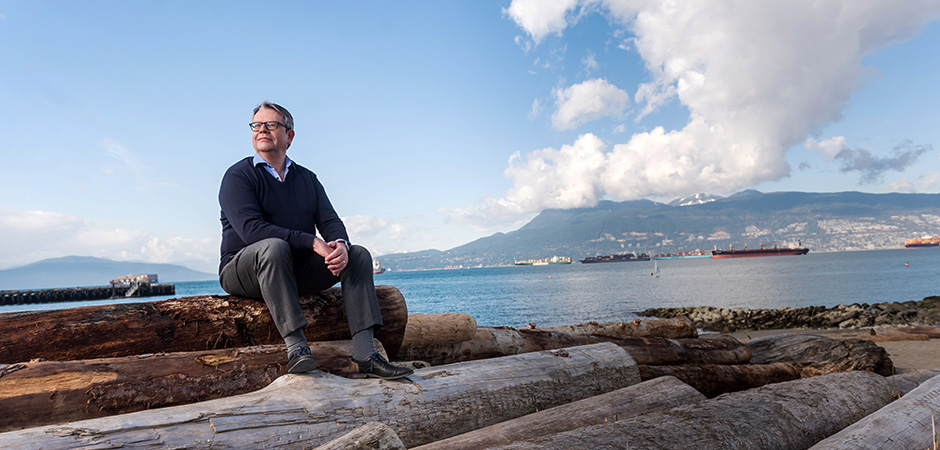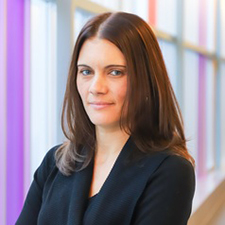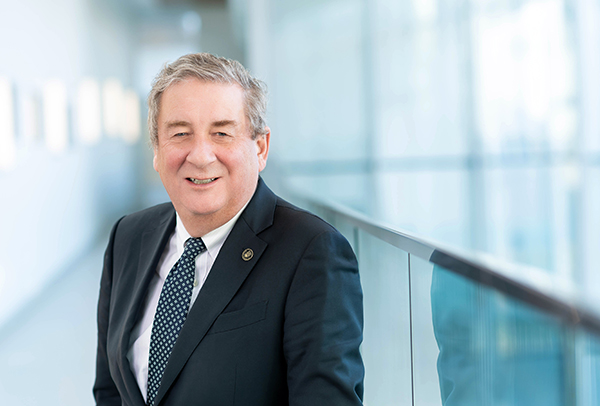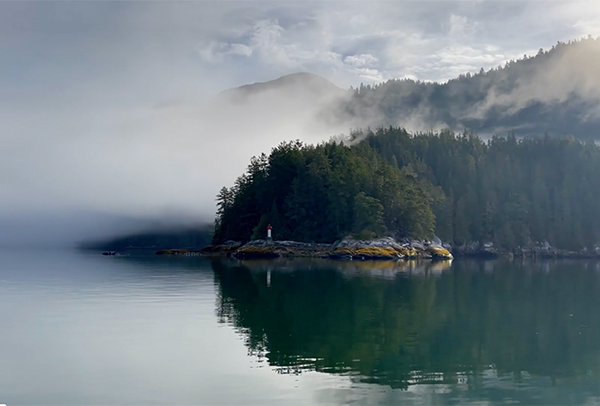Healthy aging in a changing climate
Dr. Michael Kobor and Dr. Kim Schmidt on how the environment affects the way we age, and what we can do to protect our health.

As humans, we are deeply connected to our environment. It’s a connection that becomes more evident as we grow older, with our natural surroundings playing a vital role in shaping our overall health and longevity. Climate change threatens this delicate balance, exposing us to environmental stressors that can have a significant impact on our ability to age healthily.
Scientists at the Faculty of Medicine’s Edwin S.H. Leong Centre for Healthy Aging are studying these impacts and finding ways to help people age well in a changing climate. To learn more about their work, we spoke with Dr. Michael Kobor (MK), the Edwin S.H. Leong UBC Chair in Healthy Aging — a UBC President’s Excellence Chair — and Dr. Kim Schmidt (KS), the program’s research director.
Can you describe how the natural environment and aging are connected?
MK: Aging is a complex, lifelong process. It’s determined not only by our genes, but also by the physical and social environments in which we live our lives. Our natural environment is an important part of this. It influences the air we breathe, the food we eat, our physical activity, and the stresses we endure physically and mentally. All of these factors come together to shape our risk of chronic disease and have a real impact on both our healthspan and lifespan. Healthy aging is inextricably linked to the health of our planet.
What impact does climate change have on how we age?

KS: We’re already seeing the consequences of climate change on aging. There are very clear and immediate impacts from the extreme weather events that are becoming more frequent with climate change.
Consider the unprecedented heat dome that British Columbia experienced in summer 2021, which was the deadliest weather event in Canada to date. We saw an immediate impact on quality of life and mortality, and this fell hardest on some of the most vulnerable members of society, including older adults and people living in inadequate housing.
But there are also hidden impacts. Cumulative, year-after-year exposure to things like climate stress, wildfire smoke and extreme heat get under the skin to create lasting biological changes. These exposures literally alter the composition and location of chemical groups that bind to DNA in our cells. They affect how our genes are expressed, turning them off and on, and can increase our risk of disease and other health complications as we age.
How do these hidden impacts shape our long-term health and aging?
MK: There’s ample evidence linking the impacts of climate change — and wildfire smoke in particular — to increased prevalence of diseases like cancer, asthma, respiratory illness, and cardiovascular diseases. Overall, my prediction would be that the physical and mental stress associated with climate change and exposure to environmental extremes would lead to accelerated aging on a population level.
“Cumulative, year-after-year exposure to things like climate stress, wildfire smoke and extreme heat get under the skin to create lasting biological changes.”
– Dr. Kim Schmidt
KS: These hidden impacts can start from a young age, even before we’re born. Knowing this, we’re collaborating with Dr. Sarah Henderson and the B.C. Centre for Disease Control to study how wildfire smoke exposure during pregnancy impacts an infant’s biological markers of aging. No one has done this before. It will shed light on how climate change impacts aging right from the beginning of our lives and the consequences prenatal exposure has across the lifespan.
What can we do to protect ourselves?
MK: Ultimately, the goal should be to limit climate change. But in addition to this, we need to think about how we can build resilience and future-proof our communities against climate change in a way that promotes healthy aging. Things like ensuring people have access to green space, adequate housing, clean drinking water, healthy food, and clean air. This includes effective public health strategies that help people to reduce harmful environmental exposures and provide real-time, helpful information during emergencies.
On an individual level, many of the activities that we typically associate with healthy aging will help buffer against the impacts of changing climate. Activities like eating healthy foods, getting regular exercise, keeping mentally active, and many more.
“We need to think about how we can build resilience and future-proof our communities against climate change in a way that promotes healthy aging.”
– Dr. Michael Kobor
Social connectivity is important too. Being connected to family, friends and your community can shield us from climate stress and anxiety. And in times of emergency, like an extended heat wave, social connection provides a support network that ensures we’re checking in and caring for our most vulnerable.
What role can the Edwin S.H. Leong Centre for Healthy Aging play?
KS: We’ve brought together an incredible interdisciplinary team of researchers who are tackling aging from every angle, including the biological, social, cultural and environmental factors. Climate change doesn’t know academic boundaries, so it’s important that our response is holistic, interdisciplinary and collaborative.
One example of this: We’re collaborating with the School of Health and Exercise Sciences at UBC Okanagan, and we recently provided a research award to UBC student Kathryn Cosby for a study examining environmental barriers to physical activity in older adults, including the role of extreme weather events in B.C.’s interior. The goal is to identify opportunities to help older adults stay active and age in place within the context of climate change.
Never miss an issue of Pathways
Pathways — the UBC Faculty of Medicine’s digital magazine — features stories about cutting-edge health education, breakthrough research, and biomedical innovations that are making a difference in British Columbia and around the world. Discover the impact of our people and programs.





